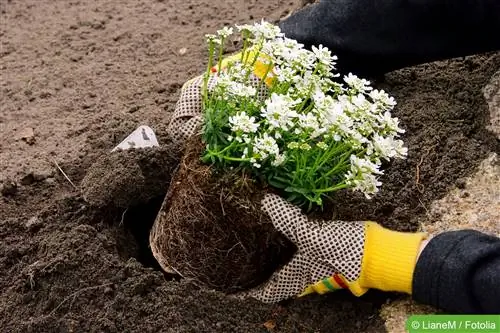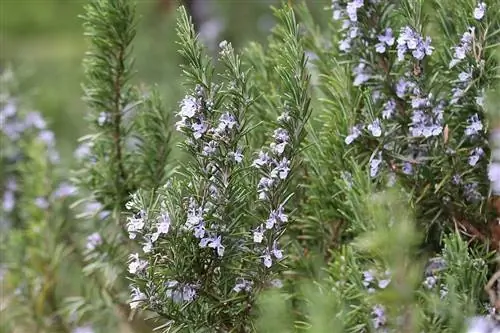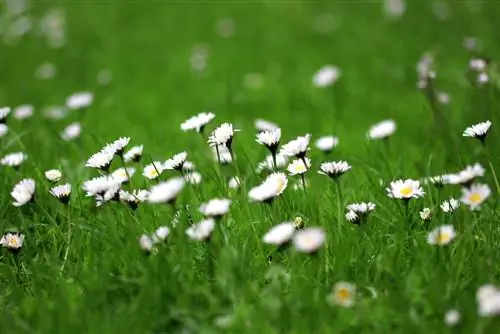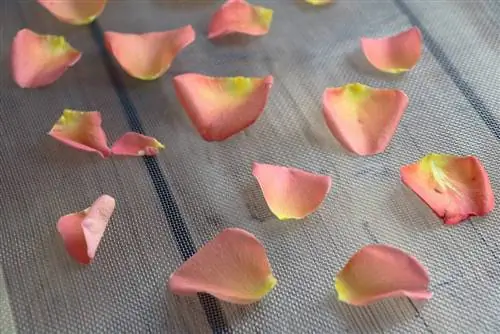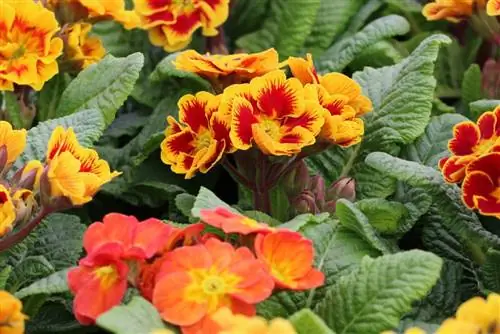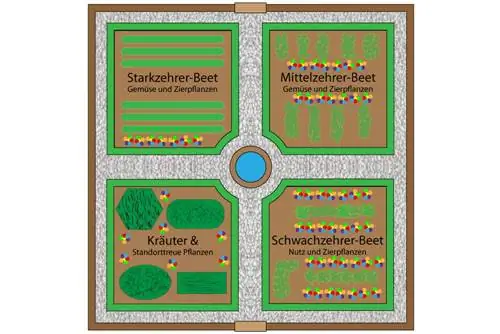- Author admin [email protected].
- Public 2023-12-17 03:39.
- Last modified 2025-06-01 06:48.
Numerous flowers can only be sown to a limited extent or not directly in the garden. Such plants can either be grown at great expense or purchased from a garden center. Our planting calendar provides you with all the information you need.
In the “Garden Calendar” guide you will also find other planting calendars, also known as plant calendars, and seed calendars for flowers, vegetables and herbs.
Perennials are planted in March
Rhododendron
- Planting site: partially shaded to shady
- Soil: acidic, humus-rich and nutrient-rich soil
- Flowering period: May - June
- Growth height: 400 cm
- Planting distance: 100 cm
- hardy
Azalea
- Planting site: partially shaded to shady
- Soil: acidic, humus-rich and nutrient-rich soil
- Flowering period: May - June
- Growth height: 150 cm
- hardy
Magnolia
- Planting site: sunny
- Flowering time. July - October
- Growth height: 700 - 800 cm
- Planting distance: at least 250 cm
- hardy
Camellia
- Planting site: sunny - partially shaded
- Flowering time: March - April
- Growth height: 150 - 200 cm
- Planting distance: 80 cm
- hardy
hydrangea
- Planting site: sunny - partial shade - shady
- Flowering time: July - October
- Growth height: 100 cm
- Planting distance: approx. 80 cm
- hardy
Forsythia
- Planting site: sunny - partially shaded
- Flowering time: March - April
- Growth height: 250 cm
- hardy
Lilac
- Planting site: sunny - partially shaded
- Flowering time: May
- Growth height: 300 cm
- Cut flower
- hardy
Planting and caring for spring-flowering shrubs and perennials
Spring in the planting calendar is led by spring flowers, colorful perennials and shrubs such as hydrangeas, forsythia, rhododendrons, camellias, magnolias and azaleas.
Depending on the weather conditions, the best time to plant rhododendrons, azaleas, forsythia, lilacs and many other spring-flowering shrubs is the end of March and the entire month of April, according to the planting calendar. Forsythia and lilacs are undemanding hedge plants that thrive in good garden soil in both sun and shade, while rhododendrons are best transplanted in moorland, but also thrive in humus-rich, moist garden soil. A semi-shady place in the garden should be chosen as the location. Do not scatter rhododendrons and azaleas individually in the garden, as this will make the acidic soil less durable. Instead, it is advisable to plant several rhododendrons and azaleas, both of which belong to the heather family (Ericaceae), in groups over a larger area.
Rhododendrons and azaleas in the planting calendar
Early spring rhododendrons delight every garden lover with their blooms in April. They are planted in March/April, are carmine pink in color and are known by the Latin name Praecox. With a height of 1 to 1.5 meters, they can also be beautifully integrated into smaller gardens.
The Rhododendron fortunei also blooms in April but grows up to 3 - 4 meters high. As an evergreen shrub, it is only hardy in sheltered locations. With its light pink, irresistibly scented flowers, it provides a beautiful contrast to other spring flowers.
Other species in the May/June planting calendar of flowering rhododendrons and azaleas:
- Ghent Azaleas (deciduous)
- Japan - Rhododendrons (semi-evergreen)
- Pontica - Hybrids (deciduous)
- Catwbiense - hybrids (available in red, white, pink, purple and evergreen)
Rhododendrons with a height of up to 4 meters need space and are planted at a distance of one meter.
The spring-flowering ornamental perennials and shrubs are cut back after flowering in May so that the new shoots can develop well over the summer.
Plant protection in the planting calendar
In the May planting calendar, the young black weevil beetles begin to feed on rhododendrons, hydrangeas, lilacs, laurel and similar perennials, thereby causing so-called bay feeding on the leaves. If you want to avoid chemical weapons, the best way to collect the beetles is in the early hours of the morning.
The rhododendron cicadas also become more important as they begin their activity at the end of April / beginning of May. Whitish to yellow-green larvae hatch in the eggs laid in rhododendron buds at the end of April and develop into adult cicadas by the end of May. The larvae and also the adult cicadas damage rhododendrons by colonizing the young shoots and buds by transmitting the fungal disease “bud tan”. The fungal disease spreads to the entire bud, so that they can no longer sprout on rhododendrons and azaleas, but instead turn brown and die. The cicadas grow to around 9 mm in size, are blue-green with an orange-red striped back when adult and are found on the underside of the leaves along the leaf veins. The female cicada only produces one generation per year. Between August and October, the female cuts slits into the flower buds and lays her eggs in them. To combat it, we recommend cutting off the brown buds and disposing of them directly in household waste. So-called yellow signs can also be attached to the bushes. These are insecticide-free and cause the cicadas to stick and therefore cannot lay their eggs.

